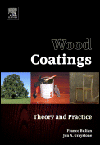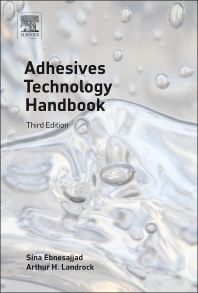"Green" UV Coatings Technology Comes to Total Door
This company implemented UV coatings technology to replace a solvent-based system to increase production capabilities and provide a safer work environment for employees.

 “In
a time of unprecedented economic uncertainty, we have been able to
strategically position ourselves to meet the current and future needs of our
customers.” Those were the words stated by Patricia Yulkowski, Total Door®
Chief Executive Officer, marking the grand opening of Total Door’s new
environmentally conscious, Feng Shui-inspired, innovative manufacturing and
training facility.
“In
a time of unprecedented economic uncertainty, we have been able to
strategically position ourselves to meet the current and future needs of our
customers.” Those were the words stated by Patricia Yulkowski, Total Door®
Chief Executive Officer, marking the grand opening of Total Door’s new
environmentally conscious, Feng Shui-inspired, innovative manufacturing and
training facility.
What may not have been touted as loudly as the significant historical event of the grand opening are the impressive “green” innovative processes, materials and tools that Total Door has designed into its manufacturing system. Patricia Yulkowski notes that “80% of our material is recycled, and we have significantly reduced the use of volatile organic compounds. Our door systems are also made in the United States, whereas 80% of builder’s hardware product is manufactured overseas.”
An exceptional example of one of Total Door’s innovative process changes was moving from solvent-based coating to UV coating technology. The move was a major part of the company’s green strategy, and teaming with Allied PhotoChemical, Inc., a Michigan-based UV technology company, delivered the right solution – streamlining the manufacturing process, for Total Door’s needs.
Total Door’s decision to move from solvent-based coating to UV coating technology was based on “sustainability” of the technology. UV coating provides a platform for Total Door’s manufacturing based on the following key attributes:
From a production standpoint, UV coating technology offers Total Door the ability to implement a process that consumes a great deal less floor space, mainly by reducing or eliminating conventional ovens and conveyors. “Work in Process” is virtually eliminated due to the instant cure properties of the UV coating process. With these reductions, energy costs are also reduced. One main area of focus for Total Door is overall quality and the costs associated with quality. The ability to immediately inspect UV-coated cured parts is critical to Total Door’s goal to continually reduce quality defects. The UV paint process delivers this capability.
The sustainability of UV coating technology offers Total Door a means to greatly reduce its VOC emissions, as most UV coatings contain no VOCs or HAPs (Hazardous Air Pollutants). Typically, UV coatings offer the manufacturer reduced reporting as well as cleaner and safer work environments.

After the coating is applied, two Fusion microwave UV lights are reciprocated on each side of the product. This ensures that adequate curing of the coating takes place. Figure 1 is a pictorial representation of the UV coating and cure of the UV coating process at Total Door.




What may not have been touted as loudly as the significant historical event of the grand opening are the impressive “green” innovative processes, materials and tools that Total Door has designed into its manufacturing system. Patricia Yulkowski notes that “80% of our material is recycled, and we have significantly reduced the use of volatile organic compounds. Our door systems are also made in the United States, whereas 80% of builder’s hardware product is manufactured overseas.”
An exceptional example of one of Total Door’s innovative process changes was moving from solvent-based coating to UV coating technology. The move was a major part of the company’s green strategy, and teaming with Allied PhotoChemical, Inc., a Michigan-based UV technology company, delivered the right solution – streamlining the manufacturing process, for Total Door’s needs.
Total Door’s decision to move from solvent-based coating to UV coating technology was based on “sustainability” of the technology. UV coating provides a platform for Total Door’s manufacturing based on the following key attributes:
- faster production speed;
- reduced work in process;
- reduced manufacturing footprint;
- reduced energy costs;
- reduced quality costs;
- cleaner – no VOCs or HAPs; and
- cleaner and safer work environment.
From a production standpoint, UV coating technology offers Total Door the ability to implement a process that consumes a great deal less floor space, mainly by reducing or eliminating conventional ovens and conveyors. “Work in Process” is virtually eliminated due to the instant cure properties of the UV coating process. With these reductions, energy costs are also reduced. One main area of focus for Total Door is overall quality and the costs associated with quality. The ability to immediately inspect UV-coated cured parts is critical to Total Door’s goal to continually reduce quality defects. The UV paint process delivers this capability.
The sustainability of UV coating technology offers Total Door a means to greatly reduce its VOC emissions, as most UV coatings contain no VOCs or HAPs (Hazardous Air Pollutants). Typically, UV coatings offer the manufacturer reduced reporting as well as cleaner and safer work environments.

Total Door Manufacturing Flow
Figure 1 outlines the details of the UV coating process at Total Door. The system has two bell atomizers that are reciprocated. The coating is applied electrostatically, ensuring excellent coating coverage.After the coating is applied, two Fusion microwave UV lights are reciprocated on each side of the product. This ensures that adequate curing of the coating takes place. Figure 1 is a pictorial representation of the UV coating and cure of the UV coating process at Total Door.

Total Door Color Match Capabilities
Another important feature of the Total Door UV system design and implementation is that the UV coating technology provides on-site color matching capabilities.
Conclusion
Looking for a reprint of this article?
From high-res PDFs to custom plaques, order your copy today!






